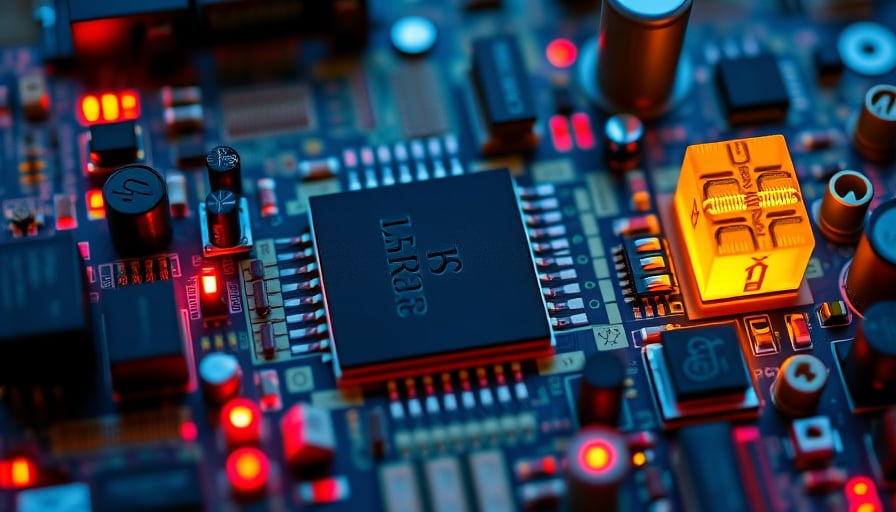The Shanghai‑listed Dosilicon: a silent contender in a roaring tech market
The latest flare‑up on the Shanghai Stock Exchange came not from Dosilicon itself but from the broader 科创100 (Sci‑Tech Innovation 100) ecosystem, which has become the beating heart of China’s high‑growth technology sector. While Dosilicon’s shares closed at 101.31 CNY on 28 Oct 2025, the company’s valuation, 44.1 billion CNY, and its glaring ‑242.7 PE ratio reveal a business still wrestling with profitability, even as the sector rallies on a tide of institutional optimism.
1. The sector surge and Dosilicon’s place within it
On 30 Oct 2025, the 科创板 100 Index dipped a mere 0.09 %, yet the sector’s flagship ETF (588030) rebounded, closing at 1.37 CNY and registering 4.58 % growth over the last week. Its turnover of 1.05 billion CNY and a yearly average of 3.91 billion CNY underscore the liquidity that has attracted new investors. This surge is driven by a narrative that “technology will dominate 2025’s capital markets,” a view echoed by institutional research from 国投证券 and 华虹公司, the largest holding in the ETF’s top ten.
Dosilicon, listed on the same exchange, is part of the mid‑cap, high‑liquidity cohort that the index seeks to represent. Its 52‑week range (21.32 – 136 CNY) reflects volatility that can be both a risk and an opportunity. With a market cap of 44.11 billion CNY, Dosilicon sits comfortably within the mid‑cap band that many ETFs target for stability and upside potential.
2. Institutional momentum and the AI/semiconductor focus
The ETF’s portfolio managers have been actively reshuffling holdings in line with the sector’s evolution. 华虹公司—the current top holding at 3.74 %—has been a consistent driver, while new additions such as 东芯股份, 源杰科技, and 云天励飞 signal a shift toward semiconductor and AI hardware. These moves are not random; they align with the broader macro trend:
- Nvidia and Deutsche Telekom plan a €1 billion data‑center partnership in Berlin, slated to launch in November.
- SAP’s commitment as the first customer further underlines the strategic importance of AI infrastructure.
For Dosilicon, these developments suggest that AI‑enabled manufacturing and supply‑chain integration could be pivotal. Although the company has not yet disclosed any direct AI initiatives, the sector’s momentum signals that firms within the same ecosystem will either adopt or be displaced by AI‑powered solutions.
3. Liquidity, turnover, and the “beta‑capture” narrative
The 科创100 ETF’s daily turnover of 1.05 billion CNY and 1.75 % turnover ratio indicate that investors are willing to trade heavily in the index’s constituents. This liquidity advantage gives ETFs an edge in beta capture—the ability to mirror index performance with minimal tracking error. Fund managers, including 苏俊杰 (588220) and 唐屹兵 (588030), emphasize that the ETF’s “full‑copy” tracking method and periodic rebalancing will keep it tightly aligned with the underlying index, even as individual holdings shift.
For Dosilicon, this environment means that any sharp movement—positive or negative—in its shares will ripple through the ETF, potentially amplifying gains or losses for investors who hold the broader index.
4. Risks that loom over Dosilicon
Despite the bullish backdrop, Dosilicon’s negative price‑earnings ratio signals that profitability is still a distant goal. The company’s recent quarterly filing (10 Oct 2025) shows that ten of its top ten shareholders have either entered or exited, with notable new holders like Hong Kong Central Securities Clearing Co. and Chen Wenshi. Such shifts can alter governance dynamics and may lead to pressure on management to accelerate earnings.
Furthermore, the sector’s valuation remains elevated. The ETF’s managers warn that “technology stock valuations are high, and the risk of a profit‑pressure bump is real.” Dosilicon’s current performance metrics—low earnings and a volatile price—make it vulnerable to a market correction.
5. Conclusion
Dosilicon’s journey is inseparable from the 科创100 narrative that is reshaping China’s high‑growth landscape. The company enjoys a respectable market cap and operates within a sector that is being propelled by AI, semiconductors, and institutional confidence. Yet its financial fundamentals lag, and the sector’s elevated valuation amplifies risk.
Investors who view Dosilicon as a beta‑capture vehicle rather than a standalone play may find comfort in the ETF’s tight tracking and liquidity. Those hoping for a rapid turnaround must confront the reality that Dosilicon’s earnings trajectory is still unclear. The story of Dosilicon, therefore, is not one of imminent triumph but of a company poised at the crossroads of opportunity and uncertainty.
